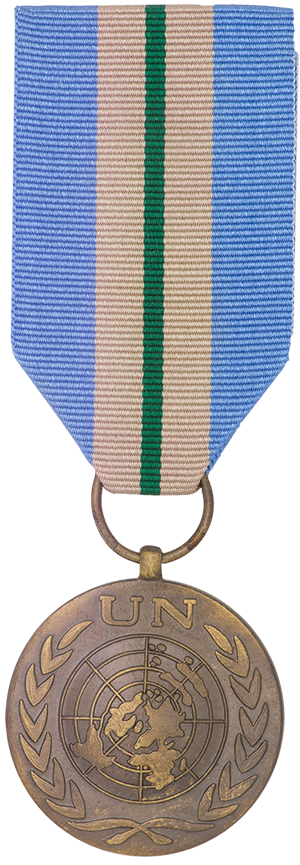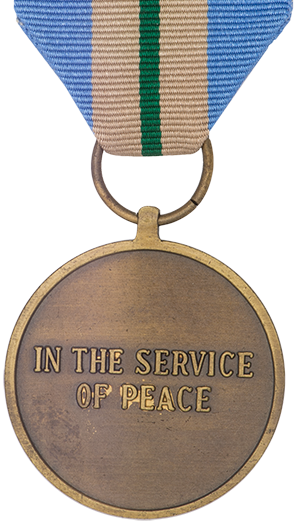UN Mission in Ethiopia and Eritrea (UNMEE)
The official description, eligibility, criteria, and history of the UN Mission in Ethiopia and Eritrea (UNMEE).


Context
The main goals of the Mission are to monitor the cessation of hostilities, to assist in ensuring the observance of the security commitments agreed by the parties, to monitor and verify the redeployment of Ethiopian forces from positions taken, and to monitor the positions of Ethiopian forces once redeployed and the positions of Eritrean forces.
Eligibility and criteria
Awarded for 90 days consecutive service between 31 August 2000 to the present.
The UN strictly applies their medals policy and will not consider requests for initial issue of the UN medals that are submitted more than one year after repatriation from the mission area.
The qualifying service is not required for members killed or presumed killed while on assignment. In such cases, the medal may be awarded posthumously.
Description
A circular bronze alloy medal, 1.4 inches (35mm) in diameter.
On the obverse, the representation of the UN symbol surmounted by the straight letters UN, both in bas-relief.
On the reverse, an inscription bearing the words "IN THE SERVICE OF PEACE" in English (and only in English).
A 0.5 inch (12mm) bronze ring, which holds the ribbon, passes through a small hollow ball at the top of a claw joined to the top of the medal.
The ribbon consisting of two outer bands of UN blue, symbolizing the presence of the United Nations. The central stripe of green symbolizes hope and fertility of the land. The two bands in tan symbolize religious freedom and the ruggedness of the country.
Bar(s)
There is no bar to this medal.
Wearing
The medal shall be worn in sequence prescribed in the Canadian Orders, Decorations and Medals Directive, and in the following manner: on the left breast, suspended from the ribbon described above, after the MONUC medal and before the MINUSTAH medal.
Post-nominals
The use of a post-nominal is not authorized for this medal.